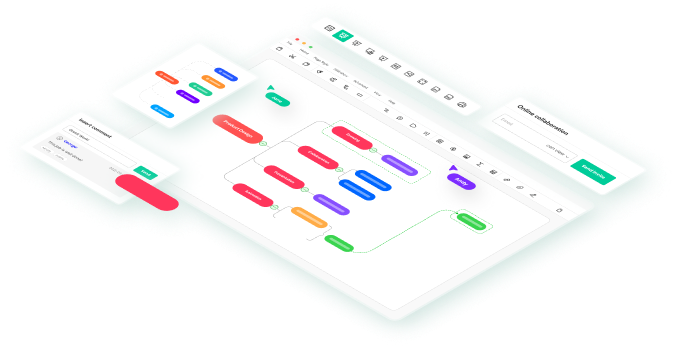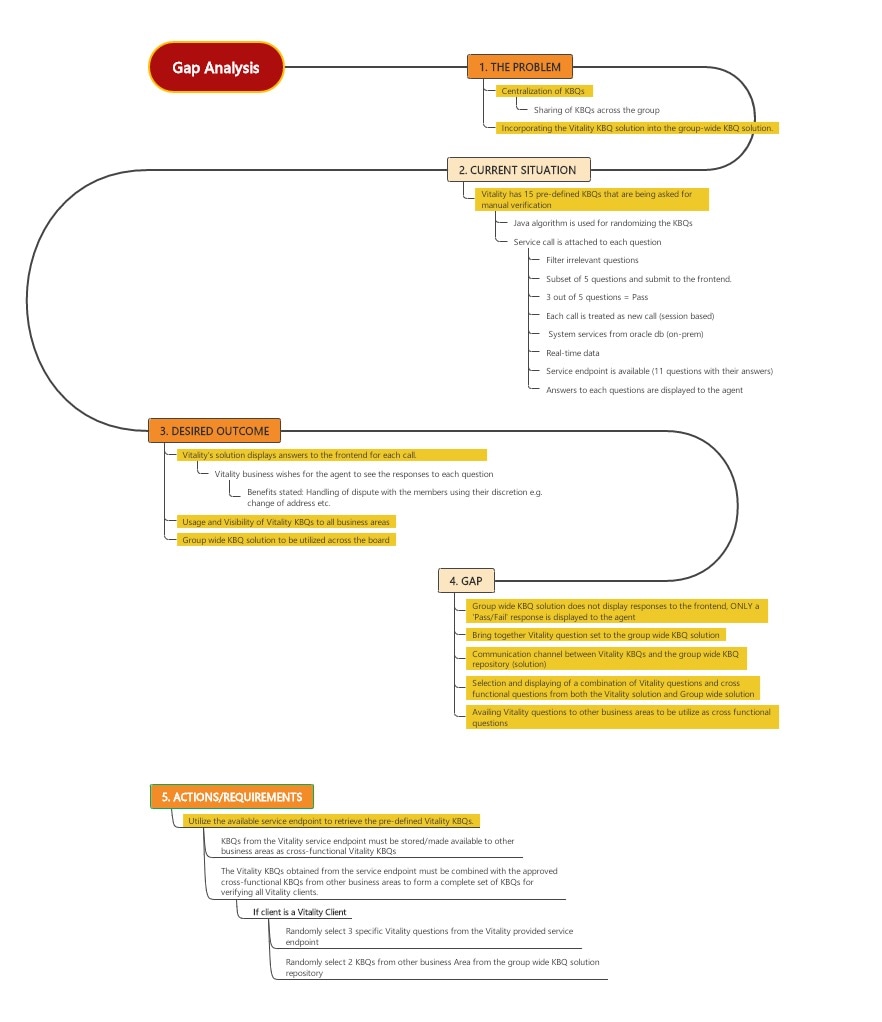The four steps outlined in a GAP analysis will guide you in understanding your problems and effectively resolving them. So, in this article, you can see what the GAP analysis diagram is all about.
In this article
What Is a Gap Analysis?
The GAP analysis template highlights the difference between your business’s current reality and its goals, making it easier to identify areas for growth. It provides a straightforward way to visualize data and pinpoint where the industry is thriving and struggling.
It usually has five parts: “Focus areas,” “Current state,” “Gap,” and “Desired State.” To make your analysis more effective, consider adding a “recommended action” or remedial measures to address the identified gap.
While the discussion below focuses on using a GAP analysis within a department, the same approach can be applied to the entire company or individual processes.
How To Do a Gap Analysis in 5 Steps
Gap analysis is the process of evaluating performance within a business function to determine if objectives are being met, and if not, to develop a set of actions to close the identified gaps.
Before doing it, you should be honest about your failure and strengths, be realistic and specific, and include a mixture of qualitative and quantitative measures for both your current and future states.
To determine it, you should do the steps as outlined below:
Step 1: Define Your Focus Areas
The first step is to determine the focus area of your organization. This should concisely describe what areas you value the most, or what you think is your company’s greatest strength. This can pertain to any of the following:
- Financial growth
- Innovation
- Employee happiness
- Scientific innovations
- Community impact
- Market growth
- Development
- Research
This can be akin to a mission statement or a statement of core values.
Step 2: Identify Your Desired Future State
After determining your focus areas, it’s time to look at the future state you want your organization to achieve. This is essentially your vision statement, which you should have in place. It should also be interconnected with your focus areas.
Thus, a good desired future state incorporates the focus area and provides a vision statement:
- To achieve market-leading customer retention and referrals (market growth focus area)
- Change the lives of people in your community in sustainable and meaningful ways (community impact focus area)
- To increase annual revenue by 200% in 10 years (financial growth focus area)
Step 3: Assess Your Current State
It doesn’t end with assessing your focus area and current state. To begin the gap analysis, you must be aware of your organization’s current state in relation to the focus areas you provided in Step 1.
Remember, for this part of the gap analysis, it is more important than ever to be 100% honest and realistic about your strengths and weaknesses. The best approach is to conduct a SWOT analysis.
Step 4: Apply Measures/KPIs to Your Gap Analysis
Once you’ve compared your desired future state with your current state, the next step is to establish measurable indicators. These are your Key Performance Indicators (KPIs). They show you how close or far you are from closing the gaps you identified.
Choose KPIs that are clear, specific, and trackable. For example, customer retention rates, employee satisfaction scores, or revenue growth percentages can all be benchmarks. Use both qualitative and quantitative metrics for a balanced view.
Always keep your KPIs realistic, so they can guide your strategy without overwhelming your team.
Step 5: Create a Gap Analysis With EdrawMind Online
After defining KPIs, it’s time to combine everything into a visual framework. This is where EdrawMind becomes valuable.
With its free online platform, you can create a structured gap analysis diagram that clearly shows your current state, desired state, and the steps needed to close the gap.
You can even utilize its AI functions to analyze various metrics easily. Aside from that, it has over 210 templates you can use in conjunction with your gap analysis, like the previously mentioned SWOT analysis under Step 3.
You can use EdrawMind’s built-in symbols, templates, themes, and icons to create a beautiful gap analysis. With real-time collaboration and flexible export functions (including JPG, PPT, PDF, and more), you can easily share it with your team.
How To Make a Gap Analysis With Wondershare EdrawMind Online and Free
Here are the steps to follow when making your first gap analysis diagram. Notably, Wondershare EdrawMind uses a mind map/diagram functionality, so you’ll try making your diagram in a chart format.
Step 1: Choose a Horizontal Diagram Layout
- Choose a horizontal Timeline layout under the Canvas > Layout panel (right-hand side).
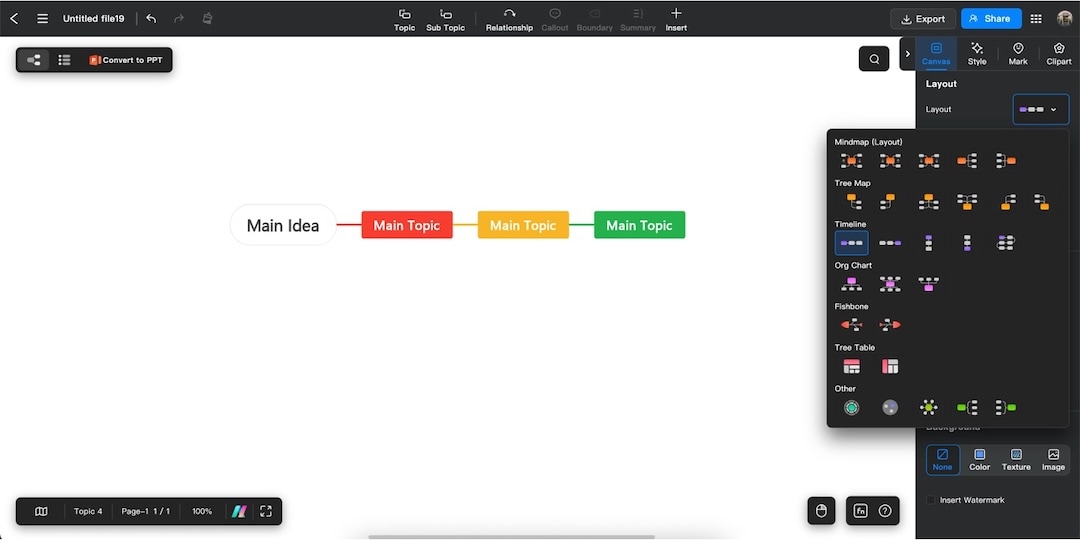
Step 2: Edit the Nodes
- Edit the Main Idea to your organization’s name plus the gap analysis label
- Edit the Main Topic as “Focus areas,” “Current State,” “Desired State,” and “Recommendations” accordingly.
- Use the Topic button to add another Main Topic node.

Step 3: Add the Subtopics
- Use the Subtopic tool to add subtopics below the Main Topic nodes
- Under Focus areas, add in the core values/areas of your organization
- Under Current State and Desired State, type in your score/assessment
- Under Recommendations, type in your action plans.

Step 4: Design Your GAP Analysis Diagram
- Use the Style panel or the floating customization bar to change colors, themes, lines, etc.
- Use the Mark or Clipart panels to add images to your diagram.
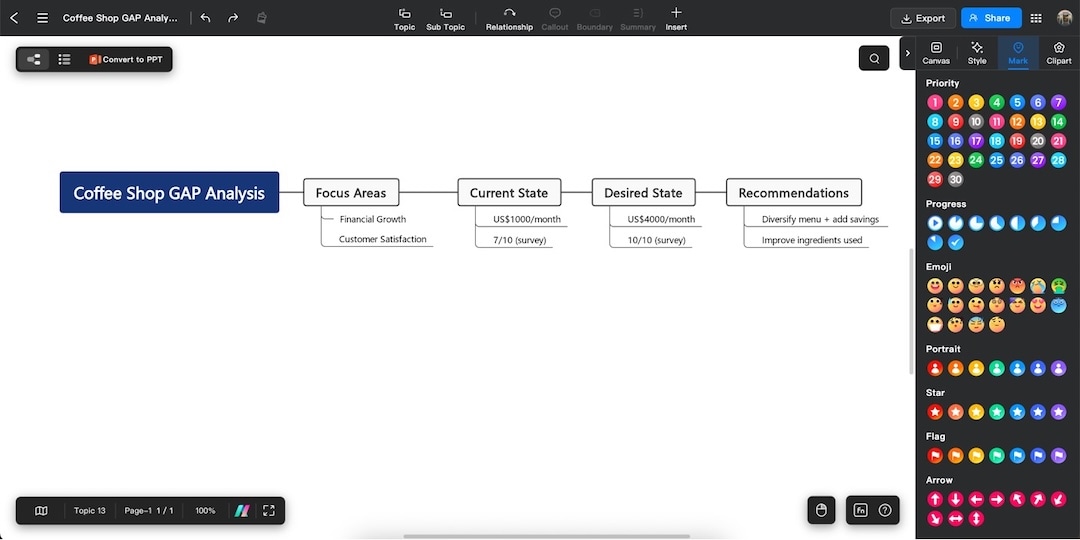
Step 5: Export Your GAP Analysis
- Press the Export button (upper-right)
- Set the export parameters (file type, name, range, format, etc.)
- Hit Export
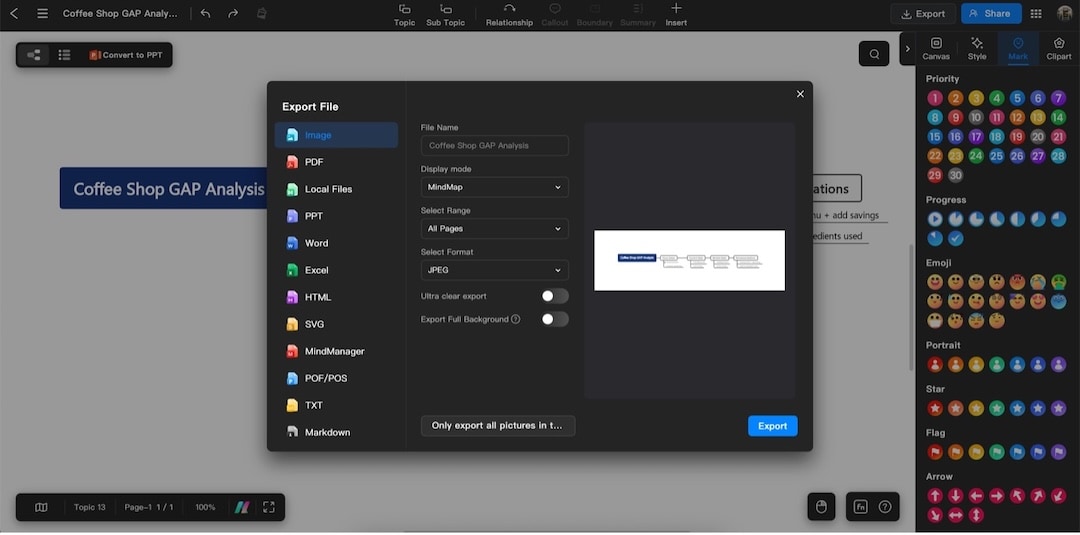
Gap Analysis Templates
Now that you know how to make your gap analysis template, here are some inspirations or templates you can use for future projects. These can be valuable, especially to improve your gap analysis skills.
Individual Gap Analysis Template
First on our list is something that you can use for yourself. It utilizes a table format and scores to assess the current and desired states. In between, you can see the “gap” score, which you have to address.
Product Gap Analysis Template
Next up is this product gap analysis template. It’s used to identify gaps that arise between a product's current state and what consumers want. A product gap analysis makes it easier to find this gap and the best solution.
Market Gap Analysis Template
Third, here is a market gap analysis template. It’s a methodical approach to understanding your business position in the market based on supply and demand. It can help analyze and identify underperforming business areas and suggest ways to improve them.
Coffee Shop GAP Analysis Template
Fourth, this coffee shop template uses more realistic figures, such as dollar revenue and survey scores, to assess financial growth. And yes, it’s the one made earlier. You can download it and use it for your own use.
Winding GAP Analysis Template
Next up, here is a winding timeline template. This approach differs from the usual table-format gap analysis diagram, as it uses much more space. But it’s perfect when you want to add more content to your diagram.
Concept Map GAP Analysis Template
This concept map GAP analysis template also uses a different approach. While the usual format places them side by side, they’ll be placed on different sides of the concept map. It’s still an option for a quick diagram, though.
Marketing GAP Analysis Template
Here’s a good sample GAP analysis template for marketers. It hits realistic metrics like social media followers and more abstract ones like community reach.
Marketing aims to get introduced to as many people as possible. Thus, it’s essential to reach these goals.
Theater Organization GAP Analysis Template
This last example examines a theater organization’s performance regarding audience engagement. It deals with the number of attendees and the usual age range of its attendees.
It’s also important to captivate university students and interested adults, so it’s a key observation point.
When To Use Gap Analysis and When Not To?
Gap analysis can help your team become better strategic planners. Use it to identify problems, adjust products or services, or change business processes to better align with goals.
Specifically, your organization can use a gap analysis to:
- Compare company results to external standards such as industry standards
- Analyze your products and services for new sales and marketing opportunities
- Forecast profit
- Identify opportunities for improvement in existing processes
- Find out why key performance indicators (KPIs) are not being met
- Understand the difference between the current and potential market size of a product or service
When Not To Use Gap Analysis
While gap analysis is a powerful tool, it's not always the right solution. There are situations where other approaches might be more effective or where gap analysis could actually slow down your progress. Don’t use it when:
- If you need immediate action and don’t have weeks to gather data for a gap analysis
- When the problem is obvious, it’s an extra step to do this when it’s easy to solve
- If you have a small team and your resources are extremely limited
- You don’t have accurate data to rely on
Benefits of Gap Analysis
A gap analysis provides clear advantages for any organization, as it bridges the space between current performance and future goals. Some of the key benefits include:
- Planning Tactics: It helps you outline specific action steps for each strategy, ensuring that plans are practical and achievable.
- Defining KPIs: By determining key performance indicators, you gain measurable benchmarks to track progress and evaluate success.
- Clarity of Direction: Gap analysis answers fundamental questions: Where are we now? Where do we want to go? How do we get there?
- Performance Tracking: It enables organizations to measure performance across various intervals, making it easy to identify tangible improvements or spot setbacks that can inform future efforts.
- Strategic Alignment: Through structured analysis, strategy formulation, and implementation, organizations can reduce inefficiencies and align actions with long-term objectives.
In short, gap analysis provides both a roadmap and a measurement system. It ensures that strategies are not just theoretical but actionable and results-driven.
What’s After Gap Analysis?
A gap analysis is only valuable if its insights lead to action. Identifying performance gaps and brainstorming solutions is the first step; implementation matters most. Without a structured follow-up, even the best ideas will remain unused.
Treat the following steps as the practical “groundwork” phase to make your gap analysis effective. This is where you turn analysis into measurable progress.
Step 1: Choose a Framework To Organize Your Plan
Once you’ve identified problem areas, adopt a framework to structure your actions. They also make it easier for teams and stakeholders to understand the purpose of each initiative.
Popular choices include the Balanced Scorecard, OKRs (Objectives and Key Results), and Porter’s Five Forces. Each framework can be adapted to fit the unique needs of your organization.
Step 2: Develop the Framework Using Gap Analysis Insights
With a framework in place, populate it with the information you gathered:
- Goals: What do you want to achieve? These should align with the desired future state from Step 2 of your gap analysis.
- Metrics: Identify measurable indicators of success. Choose one or two per goal to avoid complexity.
- Projects: Translate solutions into actionable projects. These are the concrete steps needed to close the gaps. Ideally, each goal should have at least one corresponding project.
Step 3: Put the Plan Into Action and Track Progress
Now it’s time to execute. Allocate resources, assign responsibilities, and communicate clearly across your organization. Ongoing tracking is crucial; progress must be consistently monitored to avoid straying off course.
Many organizations use performance management tools to monitor metrics and sustain long-term progress. You can also use EdrawMind’s Kanban mode to track stuff like this.
Key Takeaways
With a gap analysis template, organizations can pinpoint weaknesses in existing processes that block effective communication and strategic monitoring. A well-done analysis should also answer key questions.
Organizations can turn to tools like EdrawMind to address these findings. This collaborative mind mapping and brainstorming software makes it easy to transform complex ideas into clear visual plans.
Teams can create strategy templates, such as balanced scorecards, SWOT analyses, or PESTLE analyses, and convert talking points into dynamic presentations. With EdrawMind, strategic insights move beyond abstract concerns and become practical, actionable plans.



